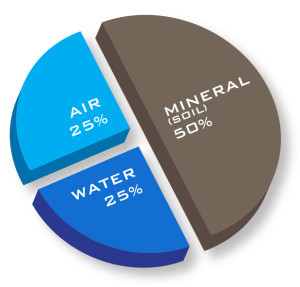Subsurface Water Management and Your 2013 Weather Challenges: “It was too wet, then too dry!”
September 12, 2013
 By Eric Stearns, Agricultural Conservation Engineer, Prinsco
By Eric Stearns, Agricultural Conservation Engineer, Prinsco
As harvest draws near, it’s a great time to reflect on the challenges of our 2013 growing season. While spring brought extremely wet weather to much of the Midwest, water was scarce in late summer causing fields to dry out and even go back to a drought stage.
Those wet spring conditions caused many farmers in the Corn Belt to declare “prevented planting” on fields they could not plant before the final USDA date. In fact, three Northern Iowa counties had a total of 171,000 acres – or 20% of their farmable land – designated as prevented planting. For much of that same region, extremely wet weather was followed by some extremely dry weather resulting in drought-stressed plants and underdeveloped crops.
Helping with “Too Wet”
Subsurface water management helps address the challenges of a wet spring in a number of ways. First, when the water table is managed, the soil is able to shed excess moisture and warm up faster. This allows farmers to get into fields more quickly and maintain early planting dates. Crops that are established earlier are able to use more of the excess water that falls in the spring, and they mature sooner, lessening their susceptibility to early frosts at the end of the season.
Using a subsurface water management system to remove excess spring rainfall also allows soil to maintain an essential mix of oxygen, which is critical to plant nourishment early in the growing season.

Optimum soil conditions require 25% air. Saturated soil means water has replaced much of the void spaces where air and oxygen would normally circulate.
Lack of oxygen stunts crop growth in wet periods. That’s because too much water can saturate soil, taking up all of the void spaces where air and oxygen would normally circulate to growing plants.
Helping with “Too Dry”
Subsurface water management creates optimum soil conditions for crops to establish the deep, downward growing root systems which are essential to crop survival during the dry periods of summer. When water is scarce, deep roots are necessary to reach the moisture that has retreated down into the soil profile. In contrast, saturated fields promote shallow, lateral root growth, which creates multiple problems later in the growing season. If weather patterns shift from wet to dry very quickly, shallow roots are unable to keep up with receding ground water.
It should be noted that a significant portion of root growth occurs early in the growing season when wet spring conditions are problematic. After tasseling, corn root growth slows dramatically. In addition to dry weather survival challenges, corn with shallow root systems are more susceptible to uprooting in strong storms. Just like a post set in the ground – if it is set too shallow, there is less soil available to stabilize the post.
The Take-away
The take-away is this: subsurface water management can help meet the full range of challenges caused by changing weather conditions. It is so much more than draining water. It is about controlling the water table in order to enhance crop health, increase productivity and improve plant durability during all weather conditions.
If you have any questions or comments about this post do not hesitate to ask by emailing me at [email protected] or leaving a message below. For more information about water management solutions, watch this educational video:
Categories: Agriculture
